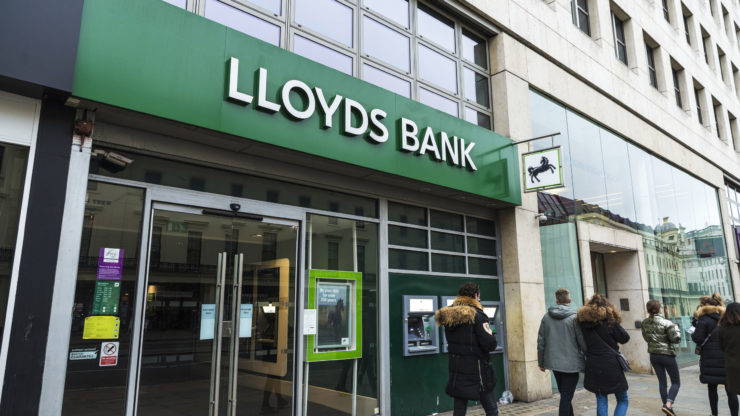Lloyds Bank share price has done well this year. It jumped by over 32% this year, joining other European banks that have surged. It peaked at 74.40p in March, bringing its market cap to over £43 billion. It has jumped by more than 265% from its lowest level during the pandemic. So, will the LLOY share price keep rising in the second quarter?
Why the LLOY share price jumped
Lloyds Bank, the biggest mortgage lender in the UK, jumped sharply in the first quarter mostly because of its strong financial results and the overall performance of other banks in Europe.
A closer look shows that most European banks jumped in Q1. In the UK, companies like HSBC, Barclays, Standard Chartered, and NatWest did much better than Lloyds because of their smaller exposure to the auto insurance industry.
Lloyds is facing major headwinds for misselling motor insurance in the UK. In its last financial results, the company set aside £700 million to cover potential losses. That was on top of the £450 million in provisions it set in the previous financial year.
Other European banks like BNB Paribas, Unicredit, Deutsche Bank, and Societe Generale have done much better this year. These companies have continued to report strong net interest income even as interest rates in the region dropped.
In addition, Lloyds Bank has embarked on a journey to reward its shareholders through a combination of dividends and share repurchases. Lloyds has a dividend yield of about 4.17%, higher than the FTSE 100 index average of 3.5%.
The bank is doing that by reducing its risk-weighed assets as it slashes its CET-1 ratio to 13% from the current 13.5%.
Lloyds Bank’s business is doing well
The most recent Q4 and full-year results showed that Lloyds Bank’s business did moderately well even as the UK economy stalled. Historically, Lloyds and NatWest are seen as good barometers of the UK economy.
That’s because they serve millions of customers in the country and don’t have any major operations abroad. Also, Lloyds Bank focuses on areas that affect consumers and businesses like mortgage and business lending. The company does not have a major presence in investment banking.
The recent numbers showed that Lloyds Bank’s net interest income dropped by 7% in 2024 to £12.845 billion. This decline happened as the Bank of England delivered two rate cuts in 2024, and deposit growth slowed. It had over £482 billion in customer deposits.
The NII decline was offset by a 9% increase in its underlying other income. Its profit after tax dropped by 19% to £4.47 billion, mostly because of its motor insurance provision.
Lloyds Bank expects that its net interest income for this year will be £14.5 billion and its return on tangible equity (RoTE) to be 13.5%.
Lloyds share price analysis
The daily chart shows that the LLOY share price has been in a strong bullish trend in the past few months. It peaked at 74.30p in March and then retested that level again last week.
As a result, the stock formed a double-top pattern, a popular bearish reversal sign whose neckline is at 67.18. This pattern means that investors will need to defend the resistance substantially since failure to cross that level will point to a retreat.
Therefore, there is a risk that the Lloyds share price will drop and retest the crucial support at 67.18, followed by more downside. However, a break above the resistance at 74.30p will invalidate the bearish view and lead to more gains, potentially to 80p.
The post Lloyds share price risky pattern points to a pullback in April appeared first on Invezz







